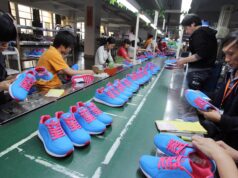Virtual reality (VR) has become an increasingly popular tool for businesses to enhance communication, collaboration, and creativity. With the ability to simulate real-world environments in three dimensions and provide immersive experiences, VR is gaining traction as a powerful business tool. Companies are leveraging VR technology to reduce costs, increase productivity and efficiency, engage customers, and improve employee training and development.
We’ll take a look at some of the ways businesses are using virtual reality – from creating realistic simulations for product design and engineering to helping companies offer better customer service experiences – as well as how virtual reality can be used in other areas of business. We’ll also explore the benefits of incorporating virtual reality into your business operations. From reducing overhead costs to helping team members collaborate more effectively, VR is becoming an essential part of many businesses’ operations.
Customer Service
Businesses are leveraging VR to provide customers with more personalized experiences. For example, customers can use VR headsets to explore product catalogs or take virtual tours of store locations before beginning their shopping journey in person. With VR technology, businesses can offer a more engaging customer service experience that is tailored to virtual reality consulting services and interactive customer support. This is particularly helpful for companies that have international customers and need to offer support in multiple languages. Some of the potential benefits of using virtual reality for customer service include improved customer satisfaction and loyalty, as well as cost savings from lower overhead costs.
Employee Training And Development
Virtual reality is also being used to help businesses train and develop their employees more effectively. VR technology can be used to create immersive simulations that provide a more engaging learning experience for employees than traditional training methods, allowing them to practice skills in a safe virtual environment. Additionally, the use of VR can help reduce the amount of time needed for traditional on-site training programs, leading to increased productivity and cost savings from fewer days spent away from work. By providing employees with a realistic simulation of tasks they may encounter on the job, companies can teach new concepts more efficiently and reduce the chances of costly mistakes.
Product Design And Engineering
VR can also be used to create realistic simulations for product design and engineering. Companies are using VR to provide their engineers with an immersive, three-dimensional environment in which they can test designs and troubleshoot problems before investing time and resources into physical prototypes or manufacturing processes. This type of virtual prototyping can save companies money by allowing them to quickly make adjustments and test different alternatives cost-effectively. Additionally, it’s much easier to share virtual prototypes with other teams or stakeholders than physical models, ensuring that everyone involved is on the same page from concept to completion. For example, automakers are using VR to help design and engineer cars faster and more efficiently.
Collaboration
Virtuality can also be used to facilitate collaboration between teams, even when they’re located in different parts of the world. By creating a shared virtual environment, teams can work together on projects in real time without needing to travel for meetings or workshops. Additionally, teams can use augmented reality (AR) features such as holographic displays to bring their work to life within this virtual space. This type of “collaborative VR” eliminates the need for expensive physical prototypes or prototypes made from materials that would otherwise require multiple trips back and forth between locations. With collaborative VR, businesses can reduce overhead costs associated with prototyping and speed up the design process. And, since the cost of VR technology continues to decrease, it’s becoming increasingly accessible for businesses of all sizes.
Remote Work
Virtual reality can also help businesses facilitate remote work. By creating a shared virtual environment, companies can provide their employees with a more engaging and productive workspace than many traditional remote working solutions. In addition to being able to communicate in real time with colleagues from anywhere in the world, teams can use collaboration tools within this virtual space to share documents and collaborate on projects together. This type of remote work has the potential to improve employee satisfaction while helping businesses save money by eliminating travel costs associated with traditional on-site meetings or workshops. And, since VR technology is becoming increasingly affordable and accessible, it’s a more viable solution for businesses of all sizes.
Operational Efficiency
Businesses can use virtual reality to improve operational efficiency in a variety of ways. For example, VR can be used to provide workers with faster training and help them become more adept at certain tasks. Additionally, VR can also be used to simulate complex scenarios or workflows that may require multiple steps or resources, allowing workers to practice and prepare for such scenarios before they occur. This type of simulation-based training has the potential to save businesses money by reducing the chances of costly mistakes on the job and improving overall productivity. And by providing workers with a more efficient and immersive way to learn, companies can ensure their employees are up-to-date on the most relevant skills and processes.
Sales And Marketing
Organizations can use virtual reality to enhance their sales and marketing initiatives. For example, companies are now using VR to create immersive product tours that allow customers to explore a product or service from the comfort of their own homes. Additionally, VR can also be used to give customers an interactive experience with a company’s brand. By creating engaging virtual environments tied to specific products or services, businesses can increase customer engagement and potentially increase sales. Companies in the travel industry are already taking advantage of this technology by providing potential customers with realistic simulations of vacation spots before they book their trips. Some retailers are also using VR to provide customers with virtual product demonstrations and try-on experiences.
Virtual reality is becoming an increasingly cost-effective and viable solution for businesses of all sizes. By creating immersive virtual environments, companies can improve operational efficiency, facilitate remote work, enhance sales and marketing initiatives, and even streamline the design process. As VR technology continues to evolve and become more accessible, more businesses will likely begin to take advantage of its potential benefits. This could revolutionize the way companies operate and open up a variety of new opportunities to businesses in a range of industries. And, as the technology continues to advance, it’s only going to become more cost-effective and powerful.














